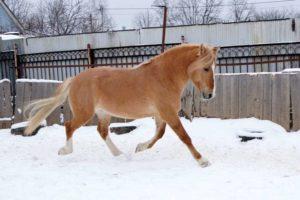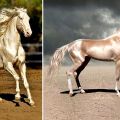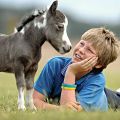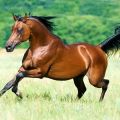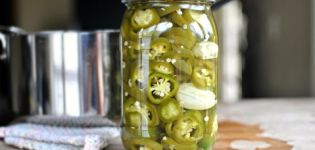Symptoms and methods of treating colic in a horse, what to do for first aid
Colic is a complex of diseases of varying severity, manifested in the abdomen, caused by various factors. In horses, the pathological process is often observed, usually of a mild nature, manifested by short-term flatulence, but there are also serious cases that threaten the death of the animal. Veterinarians use medication and surgery to combat colic in horses.
Why do horses get colic?
Colic is one of the most common equine disorders. Painful stretching of the walls of the digestive tract is provoked by many factors.
Intestinal intussusception
The term means the introduction of a certain part of the intestinal tract into the neighboring one. The length of the abnormal area ranges from 5 cm to 1 m. The provocateurs of pathology are spoiled food, cold water, inflammatory and spastic processes, flatulence.
A common cause of a pathological condition is parasitic lesions of the horse's intestinal tract. Colic is caused by various pathogenic microorganisms:
- helminth Anoplocephala perfoliate (anoplocephalidosis) - the most common pathogen;
- nematode Parascaris equorum (parascariasis) - the cause of blockage of the small intestine and ileum;
- larvae of gadflies of the genus Gastrophilus (gastrofiliasis) - provocateurs of inflammation of the gastric walls;
- nematode of the Strongylidae family (strongyloidosis) - disrupts blood circulation in the intestine, the results of which are inflammatory reactions, degenerative changes and damage to the walls of the organ.
Sandy colic
In horses, they are rare but chronic. Such colic occurs in animals that love to eat the earth. Soreness occurs when a horse swallows large amounts of sand. An effective remedy in this case is liquid paraffin, which acts as a purifier in the intestines.
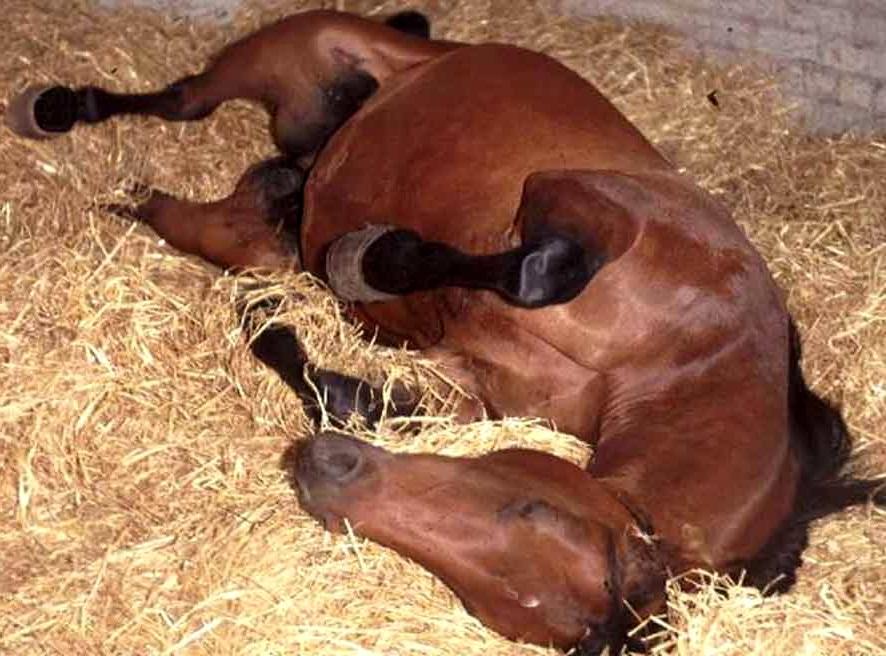
Intestinal volvulus
Colic associated with volvulus occurs with parasitic lesions, severe hypothermia, physical overstrain of the animal, and improper diet.
Sometimes the causes of the pathology are sudden body movements, falls, tumor formations and other factors due to which the pressure in the horse's abdominal cavity changes.
Thromboembolic colic
The main provocateur of pathology is strongilida nematodes. They capture large mesenteric vessels, provoking the formation of blood clots in them.Less commonly, such colic occurs as a result of physical stress, for example, participation in races.
Internal blockage
To clog the intestines, causing colic, worms twisted into a ball, coprolites, stuck foreign objects can.
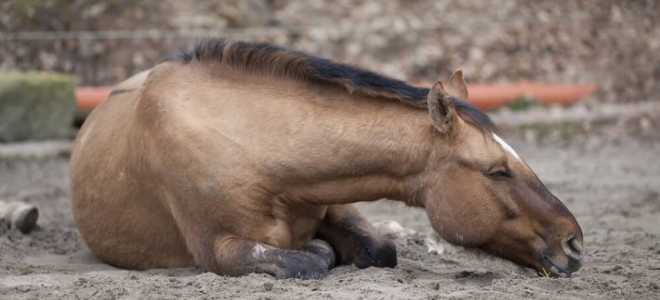
Large intestine congestion
Colic occurs when a horse is forced to eat coarse food that is low in nutrients for a long time. This food clogs the colon. Also, stagnation occurs in the intestines due to insufficient intake of liquid and juicy food, low physical activity. In older horses, colic occurs when weakly chewing food with sore teeth.
Small intestine congestion
The main reason - coprostasis - is the accumulation and hardening of feces in the small intestine. Colic occurs when a horse regularly consumes coarse dry food, suffers from vegetative dystonia, or feeds irregularly without adherence to a regimen.
Bloating intestines
Colic is caused by an excess build-up of gas inside the intestines. This happens when the horse eats food, which begins to ferment in the digestive tract.

Acute gastric dilatation
Colic occurs when a horse's stomach is distended by gas or over-ingested food.
The main symptoms
The main symptom of a pathological condition in horses is pain, which, depending on the severity of the problem, can be mild or intense, long-term or short-term. Painful sensations are:
- spastic, caused by increased tone of smooth intestinal muscles;
- distal, associated with stretching of the intestinal walls due to the pressure of accumulated gases;
- mesenteric, provoked by a change in blood circulation in the vessels of the digestive tract.
Colic in horses is accompanied by different symptoms depending on the cause and intensity of the pathological process:
- Weak manifestation - the horse does not want to eat food, is worried, bends its neck to look at the belly, touch it with its lips, tries to reach the belly with its hind limbs, digs bedding in the stall with its hooves. This list of symptoms is typical for intestinal obstruction.
- Moderate manifestation - an animal in anxiety rushes about the stall, rolls on the mat with its back down, tries to bite or kick its own stomach. There is an increase in temperature and profuse sweating. Symptoms are characteristic of intestinal and stomach volvulus.
- Intense manifestation - the horse is depressed, sluggish, breathing often. Tachycardia is noted, the body of the animal is cold to the touch, covered with sticky sweat. Such symptoms are accompanied by colic at a late stage, when the walls of the digestive tract are torn, tissue necrosis begins.
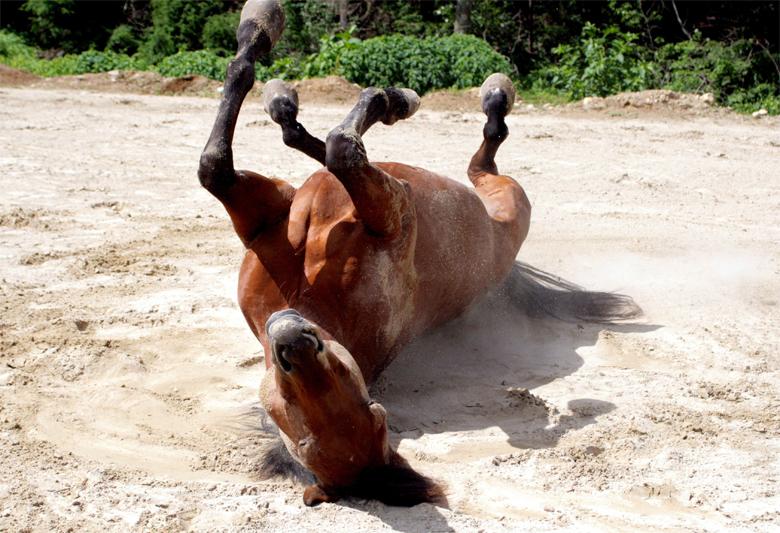
Diagnostic methods
First, the veterinarian takes a history, learns the following information from the horse owners:
- how long the animal has had pain and other symptoms;
- how colic manifests itself (their intensity and frequency);
- the appearance of feces;
- when the horse has had its last bowel movement;
- used feed;
- whether there has been a recent change in diet;
- whether preventive veterinary measures were carried out (vaccination, antiparasitic treatment);
- whether the horse has chronic pathologies;
- whether the mare was pregnant when she last gave birth.
Having collected the history, the veterinarian examines the animal. Usually, after this procedure, it is already possible to establish, if not accurate, then a preliminary diagnosis. For example, if a horse is shifting from foot to foot, the vet suspects volvulus. If the body of the animal is sticky with sweat, then there is a high probability of rupture of the stomach or intestinal wall. When diagnosed, horses are not given analgesics, otherwise the symptomatic picture will be smeared.
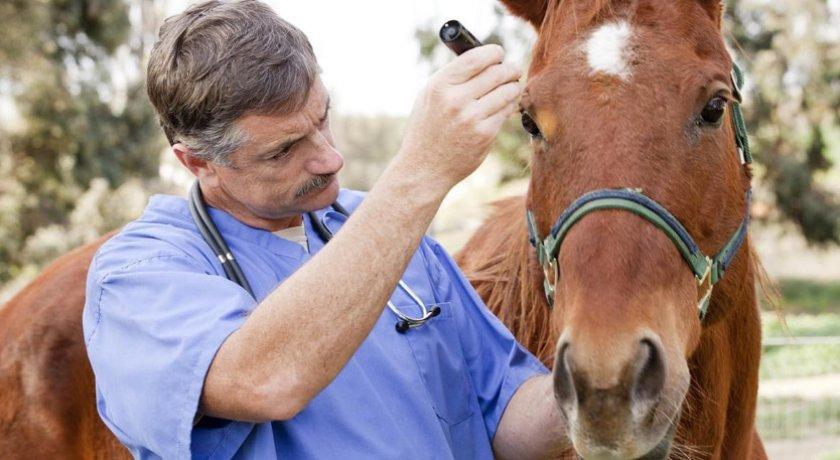
Next, the doctor listens for intestinal noises.To do this, he selects a section of the body between the last rib and the sternum. If the intestines are healthy, then noise rolls are heard with a frequency of 2-3 minutes. When the intestines are blocked, there is no noise. For an accurate diagnosis, probing is used. The tube is slowly inserted into the stomach through the esophagus. Using a probe, a sample of the contents of the organ is taken for analysis for composition and acidity.
The normal volume of gastric juice in a horse is 500 ml, when the stomach is blocked, the content of liquid mass increases to several liters.
Rectal examination is carried out in order to identify the anatomical and physiological state of the abdominal organs. The procedure is carried out with extreme caution so as not to tear the intestines. For this reason, the procedure should not be done during severe intestinal distention, as well as foals.
Pathological changes observed during rectal examination:
- the release of liquid feces is a sign of blockage of the cecum;
- dark feces - intestinal bleeding as a result of ulceration or rupture;
- release of mucous masses - weakening of intestinal peristalsis, slagging of the colon;
- excessive accumulation of gases in the thin section is a sign of intestinal obstruction;
- an increase in the tone of the ligamentous tissues, thickening of the intestinal walls - blockage of the blind area of the intestine;
- narrowing of the lumen of the small intestine is a sign of spasms;
- induration in the right zone under the lumbar region - invagination of the iliac region into the blind.
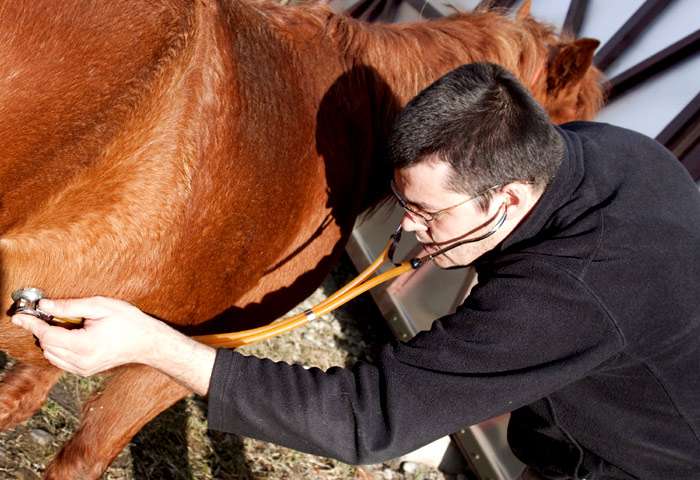
If a rectal examination is impossible, then an ultrasound method is used. With its help, excessive accumulation of gases and liquid substances, changes in the walls of the digestive tract, clogging and intussusception of areas, volvulus are revealed.
Also, in some cases, the following diagnostic methods are used:
- puncture to take the internal liquid contents from the abdominal cavity (the analysis reveals a rupture of the intestinal wall and infectious inflammation);
- laparoscopy;
- gastroscopy to detect inflammatory processes in different parts of the digestive tract;
- radiography.
Treatment rules
A horse is treated, taking into account the nature and course of a particular disease, with a therapeutic or surgical method.
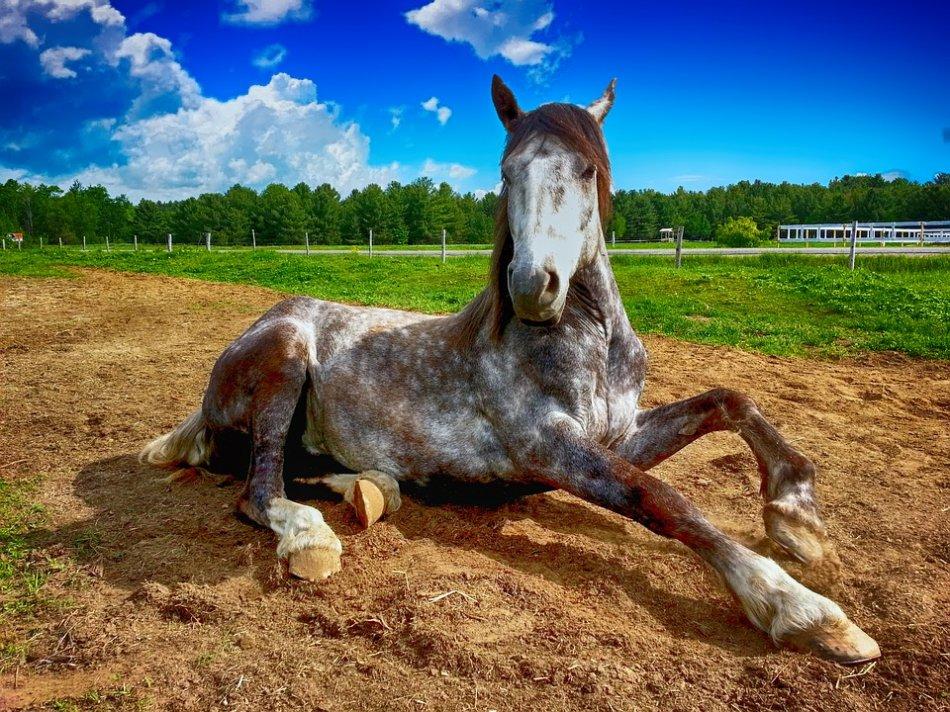
Therapeutic
Therapeutic methods (medicines, injections) are used for:
- excessive gas formation;
- overflow of the stomach;
- ulceration of the gastric walls;
- inflammatory process;
- obstructive intestinal obstruction (blockage by helminths, foreign bodies).
First aid involves the relief of pain with analgesics and antispasmodics, intravenous administration of serum from toxins, glucocorticoids, electrolytes. The stomach contents are removed by tube.
After an accurate diagnosis, a specific treatment is applied:
- laxative medicines and enemas for slagging of the intestines;
- antibiotics for infectious inflammation;
- anthelmintic agents for parasitic lesions;
- cholinesterase inhibitors and peristalsis stimulants (Cerucal, Neostigmine) for spasms.
When twisting intestinal loops, it is absolutely impossible to use the above means, otherwise the walls may rupture.
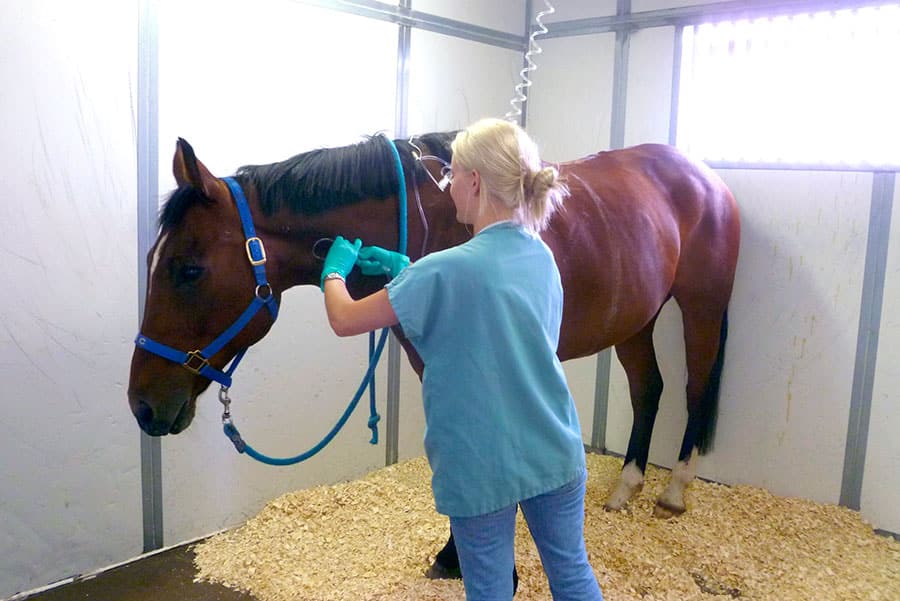
Surgical
Horse surgery has to be done if:
- colic does not go away after the administration of analgesics;
- diagnostics confirmed obstruction, edema, swelling, or intussusception;
- the small intestine is palpable, which should not be the norm;
- analysis of gastric fluid taken out by probe showed an alkaline environment;
- puncture showed the presence of an opaque bloody substance in the abdominal cavity.
Whether the outcome of the surgical intervention will be successful depends on the timing of the detection of symptoms. So, with strangulated intestinal obstruction, accompanied by pinching of the mesentery, the necrotic process begins after 2-3 hours.
The operation of horses is performed mainly by the method of medial laparotomy with the introduction of saline into the abdominal cavity to prevent rupture of the intestinal walls. After the operation, the horse is kept in a stall under round-the-clock supervision, electrolytes are regularly injected, temperature and heart rate are measured, and antibiotics are prescribed.

Preventive measures
Horse colic can be prevented by following the guidelines below:
- Buy quality food without traces of fungal and bacterial infections.
- Do not feed the animal with hot or cold food. The same goes for drinking. Food should be at room temperature.
- Include in the diet 60% rough food, 25% concentrated, 15% juicy.
- Ensure the horse has access to clean drinking water at all times.
- Do not feed the animal after exercise. Rest time before eating should be at least 30 minutes.
- Do not keep the horse without physical activity for more than 12 hours.
- Use sedatives if the horse is going through stress, such as a long ride.
- Regularly carry out preventive anthelmintic measures.
The above recommendations must be followed without fail, since colic in horses is a frequent and often serious phenomenon. Competent care and proper nutrition are the keys to animal health.
